My family is about to go campground camping with friends who have never gone camping before. They asked me to make a family camping checklist for them. So, I figured I’d share the checklist with you all too. 🙂
Depending on where you go camping and what ammenities the campground has, you might not need all the items on this checklist. I personally tend to veer towards a more “minimalist camping” approach to packing (fewer things = less stress). But there is also no shame in including lots of extra or luxury items on your family camping trip.
This family camping checklist includes all the essentials. The items with a * are optional but useful to have. I’ve divided them into categories.
Download this family camping checklist as a printable PDF
Sleeping Items:
- Tent: Decide whether it makes sense to have one big tent or two small tents. Also, consider the type of tent.
- Sleeping Bags: These should be mummy style bags and have a temperature rating suitable to where you are going.
- Sleeping Pad: This is absolutely necessary! Otherwise you will lose lots of heat through the ground and be cold (no matter how warm your sleeping bag is).
- Pillow: I just bunch up my sweatshirt to use as a pillow. However, it’s nice to have a real pillow.
Cooking Items:
Before you go camping, think about what you will eat each day. You might even want to make a spreadsheet of meals for each day. This way you will make sure you have everything you need for those meals. For example, if you plan on eating canned soup for a few meals, you better make sure you bring a can opener.
- Camp Stove and Fuel: A gas-powered stove is the way to go. These come in plenty of sizes. Read more about them here.
- Cooking pots/pans: See my recommendations here.
- Non-Breakable Plates, bowls and cups: Reusable plastic or metal cups and plates are great for this. Do NOT go with disposable ones. They are terrible for the environment and make a lot of annoying trash.
- Utensils: This includes forks, spoons, and knives for eating as well as any utensils you’ll need for cooking (spatula, wooden spoons, etc.)
- Cleaning Supplies: Sponge, dish soap, scrub brush
- *Cutting Board: Especially if you plan on buying fresh foods like veggies from the store for making meals
- *Plastic tubs/sinks: This is good for holding all of your dirty dishes so you can carry them to the campground’s cleaning station. Read about the best solutions for camping sinks here.
- *Large Bowls: For holding salad or other foods. I usually will just use one of my cook pots for this instead of bringing a separate bowl.
- *Zip plastic bags and/or Tupperware containers: Very useful for putting snack foods into.
- *Napkins/paper towels: I don’t bring these because they are bad for the environment. But they are useful for cleaning hands.
- *Cooler: Useful if you are getting perishable foods from a nearby supermarket or want to keep foods you cooked fresh for longer.
- *Pot holder: Depends on the type of pot your brought. You can just use a towel for this in a pinch.
- *Can opener
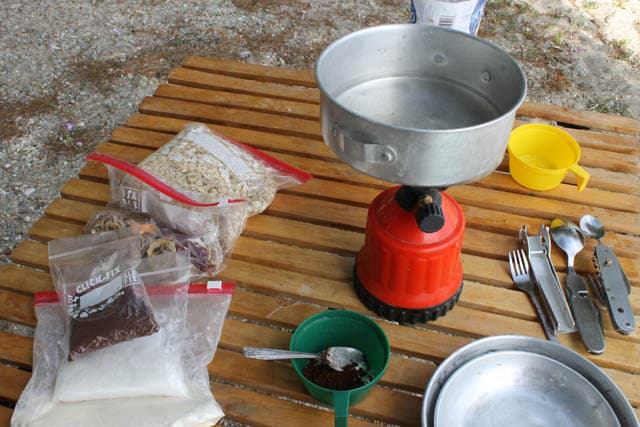
A very minimalist camp kitchen setup
Camping Food:
Most campgrounds will have a small store where they sell (overpriced) food items. They may also have a restaurant. Even if you plan on eating in restaurants a lot, I’d still recommend bring some of your own food.
Don’t know what to eat? See these easy camping meal ideas.
- Snacks: LOTS and LOTS of snacks. Granola bars, cookies, dried fruit, and make great camping snacks. Of course, SMOR’S ingredients too!
- Instant Coffee, Powdered Milk, Sugar: There are also these ways to make coffee while camping
- Tea: If you drink this instead of coffee.
- Salt, spices, herbs, condiments: Essential! Lots of the food you can buy at campgrounds is bland.
- Instant or Quick-Cooking Meals: I dehydrate meals for camping. Then I just have to add water and have a tasty, healthy meal. You can also get things like ramen packs, couscous mixes, instant soups, and other quick-cooking meals. See this post for meal ideas.
- Lots of baggies: For keeping your meals organized
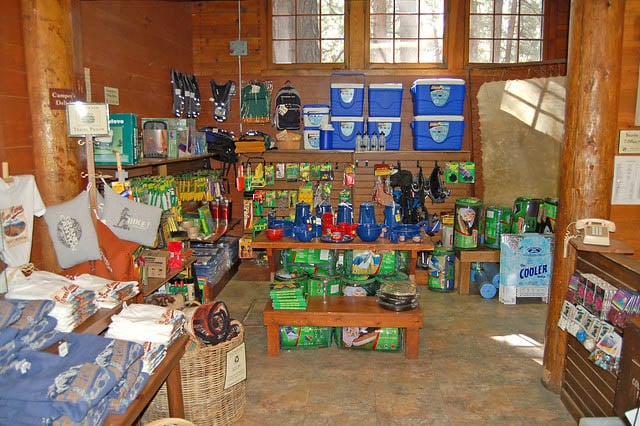
This is what a typical campground store looks like
Camping Essentials:
- Backpack: For carrying stuff on day trips.
- Flashlight, headlamp, and/or Lantern: I prefer headlamps because they allow you to have both hands free while walking around camp. Lanterns are good for ambient lighting at the campsite.
- Extra batteries: For your flashlights or other gear
- Lots of plastic bags: These are for trash, dirty laundry, wet stuff… You’ll need LOTS of them.
- Carabiners: These are incredibly useful for things like hanging your flashlight inside the tent, attaching stuff to your backpack, making a clothesline…
- *Rope: This is also very useful, especially for making a clothesline.
- Lighters/Matches
- Map, Compass and/or GPS: Great for exploring the area and also teaching kids navigation
- Whistle: In case you get lost. Make sure each kid has one and you’ve talked about what to do if you get lost.
- Big water bottles/water jugs: Campgrounds will have a place where you can get water. But you don’t want to have to walk there every time you need water for something. So get a few big bottles that can be filled and kept at your campsite.
- Smaller water bottles: These are the bottles you’ll actually be drinking from and taking on day trips.
- *Water filter: Lots of campgrounds have water but it isn’t potable (drinkable). You can use a water filter to make it safe to drink. I use a Sawyer Mini. Also see these best water filter and purifier options.
- *Camping knife/survival knife: You won’t actually need this at a campground, but it can be useful for things like shaving a marshmallow stick or other “bushcraft” tasks.
- *Axe/hatchet: If you buy firewood, you’ll probably need a hatchet to cut it into kindling. More on how to properly use a camping hatchet here.
- *Giant Tarp: This is great if you want to make a covered area to block sun or stay dry if it rains.
- *Dust pan and broom: If you are messy, this is useful. You can clean your campsite so you don’t end up with a zillion ants.
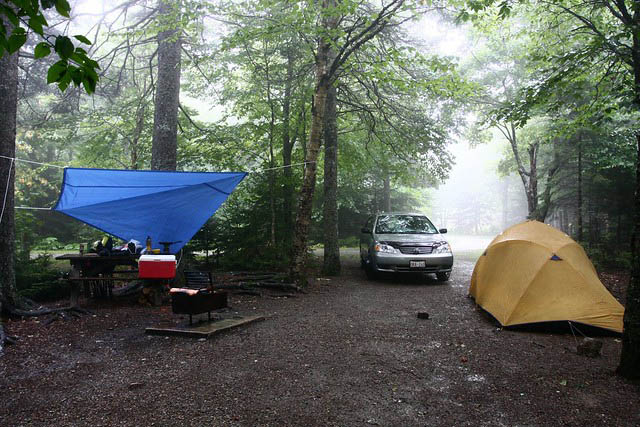
This tarp setup is great for rainy days. Tarps are also great for blocking sun.
Hygiene Items:
- Bag for holding all of your hygiene items: Makes it easier to carry all of the stuff to the campground bathroom. Preferably a waterproof bag.
- Toilet Paper: Lots of campgrounds don’t have TP in the bathroom!
- Wet Wipes: Good for cleaning your hands and body when you don’t feel like walking to the camp bathroom.
- Toothbrush, toothpaste
- Period stuff: I use a menstrual cup. Note that you can’t always put tampons in outhouses. Read about dealing with your period while camping here.
- Hair brush, comb, hair bands, headbands
- Shampoo
- Hand soap
- Hand sanitizer
- Shower sandals: Campground showers are nasty. You’ll want some flip flops or other waterproof sandals to wear in the showers.
- Towels: Preferably the quick-dry camping towels.
- Washcloths
- Scent-free Deodorant: Nothing with perfumes or you will attract insects!
- *Razor: I just don’t shave for the time I’m camping. 😉
- *Small mirror: In case you care what you look like while camping.
- *Nail clippers
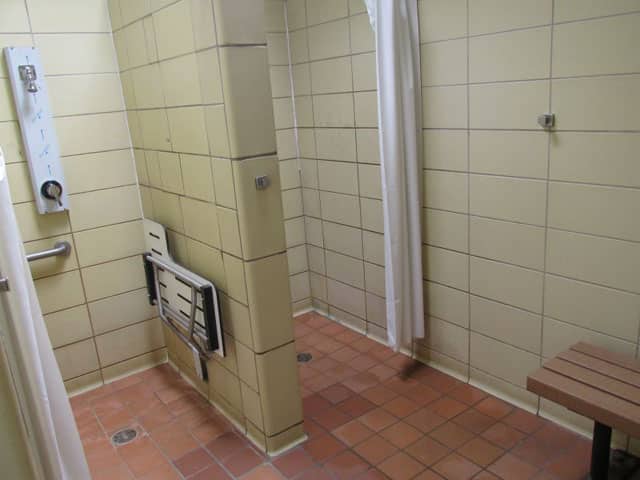
Here’s what a typical campground bathroom looks like. You’ll probably want shower shoes!
First Aid Items:
- Bug spray
- Sunblock
- Lip balm with UV protection: I always forget this and end up with sunburn on my lips.
- Personal medications/vitamins
- First aid kit: See a complete first aid kit checklist plus explanation of items here.
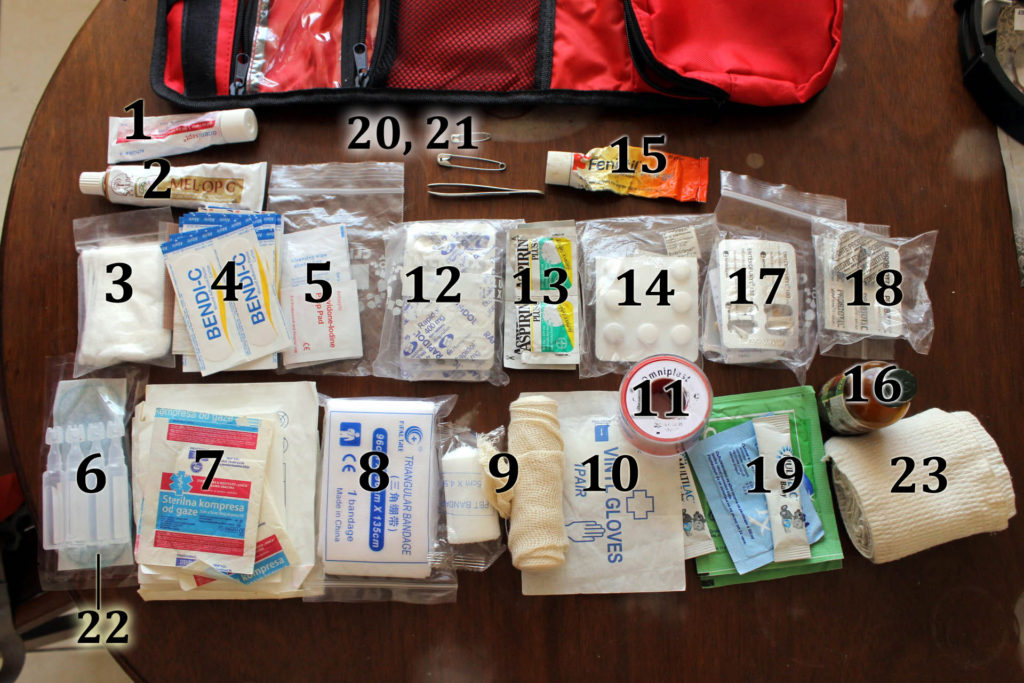
Camping Clothing:
The key to camping clothing is to dress in layers. This allows you to get more out of the same clothing. Here’s what I bring (adjust depending on temperature of where you are going; take into consideration that it may get very cold at night).
- Base layers, top and bottom: Synethic or wool materials are best
- Mid layer: Worn over the base layer for warmth, such as a fleece jacket or hoodie. If it’s really cold, you may want mid-layer pants, such as a fleece pants.
- Shell jacket: A softshell jacket and/or rain jacket
- *Rain pants: Probably essential if you are going camping in spring or late fall. Also great for little kids.
- Sports bra and underwear
- Socks: I always bring extras of these
- Camp sandals and/or shower shoes
- Sneakers
- *Boots: If you are going hiking and/or somewhere with tough terrain. If I bring boots, then I don’t bother bringing sneakers.
- Hat with a brim: Keeps rain and sun out of your eyes
- Pajamas
- *Swimsuit and swim towel
- *Sunglasses
Other Camping Items:
- Camera
- Glasses case: If you wear glasses
- *Entertainment: Books, deck of cards, games, etc.
- *Notebook and pens:
- *Field guides
- *Device chargers: Most campgrounds have electric hookups for an additional cost. Or bring a portable solar panel.
- Copies of reservations/permits
- Backups of important documents: Like health insurance info, drivers’ licenses or passports. These can be kept on the cloud or on a secure USB.
- *Small hip pack (fanny pack): Great for holding your wallet and important documents while hiking or at camp. You don’t want to leave these in your tent. Some campgrounds do have safes where you can leave these things.
- *Camp chairs and table: In case you don’t like sitting or eating on the ground. Check to see if the campground has picnic tables.
- *Picnic blanket
- *Bear canister: Some campgrounds in bear territory require these. Read about bear canisters here.
Camping Items for Very Young Children:
- Portable Potty: This way your kid doesn’t have to sit on the gross campground toilets. It is also good for little kids who might not make it to the campground bathroom on time.
- Stroller: Helpful as a place for your kid to take naps as well as getting around. See these best off-road strollers.
- Child carrier: Great for day trips, especially if you plan on doing any hiking. Read about hiking child carriers here.
- Portable high-chair: This will make feeding your child much easier. See these best baby camping chairs.
- Pack-n-play or other portable play pen: This is great for toddlers. They can play inside it while you do camp tasks without you having to worry about them running/crawling off.
- Baby bed: These are useful for keeping your baby safe in the tent. More in this post about baby camping beds.
- Mosquito net: Because there really aren’t any other good ways to keep mosquitoes off of a baby.
- Toys: You’ll realize that you don’t need that many toys when you have nature to play with. Some shovels and buckets are nice at the beach.
Camping with little kids? Read:
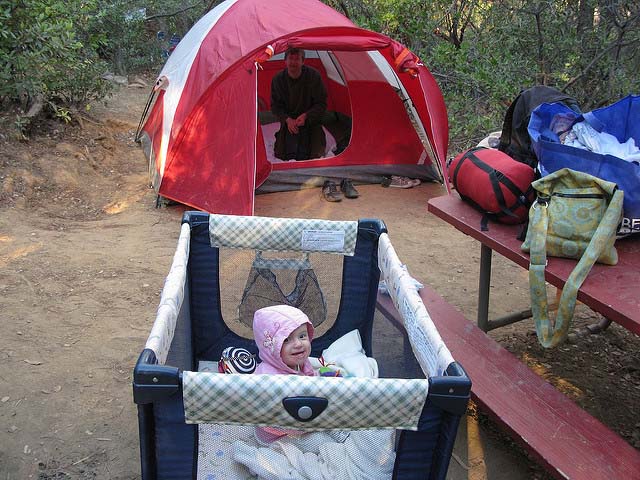
Pack-n-plays make a safe play area for baby while camping
Don’t forget that you can get the printable version of this checklist here. Happy camping!
Image credits:
“D0422 Grand Canyon_Campsite at Mather Ca” (CC BY 2.0) by Grand Canyon NPS
“Striking Camping Trip #1” (CC BY 2.0) by Graham and Sheila
“myself” (CC BY-ND 2.0) by tinisanto
“Grand Canyon North Rim Camper Store 0046” (CC BY 2.0) by Grand Canyon NPS
“Rainy Campsite” (CC BY-SA 2.0) by Martin Cathrae
“We arrive at Seneca rocks campground, an” https://www.flickr.com/photos/dionhinchcliffe/34635055210/ (CC BY-SA 2.0) by dionhinchcliffe


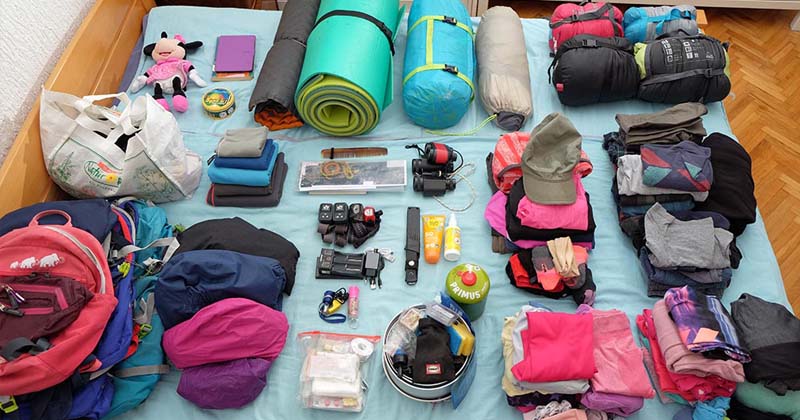
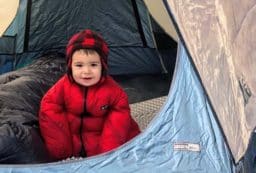
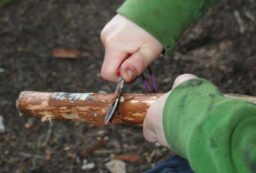
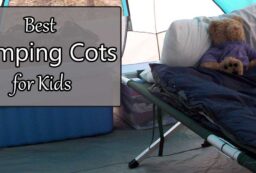







Post your comments